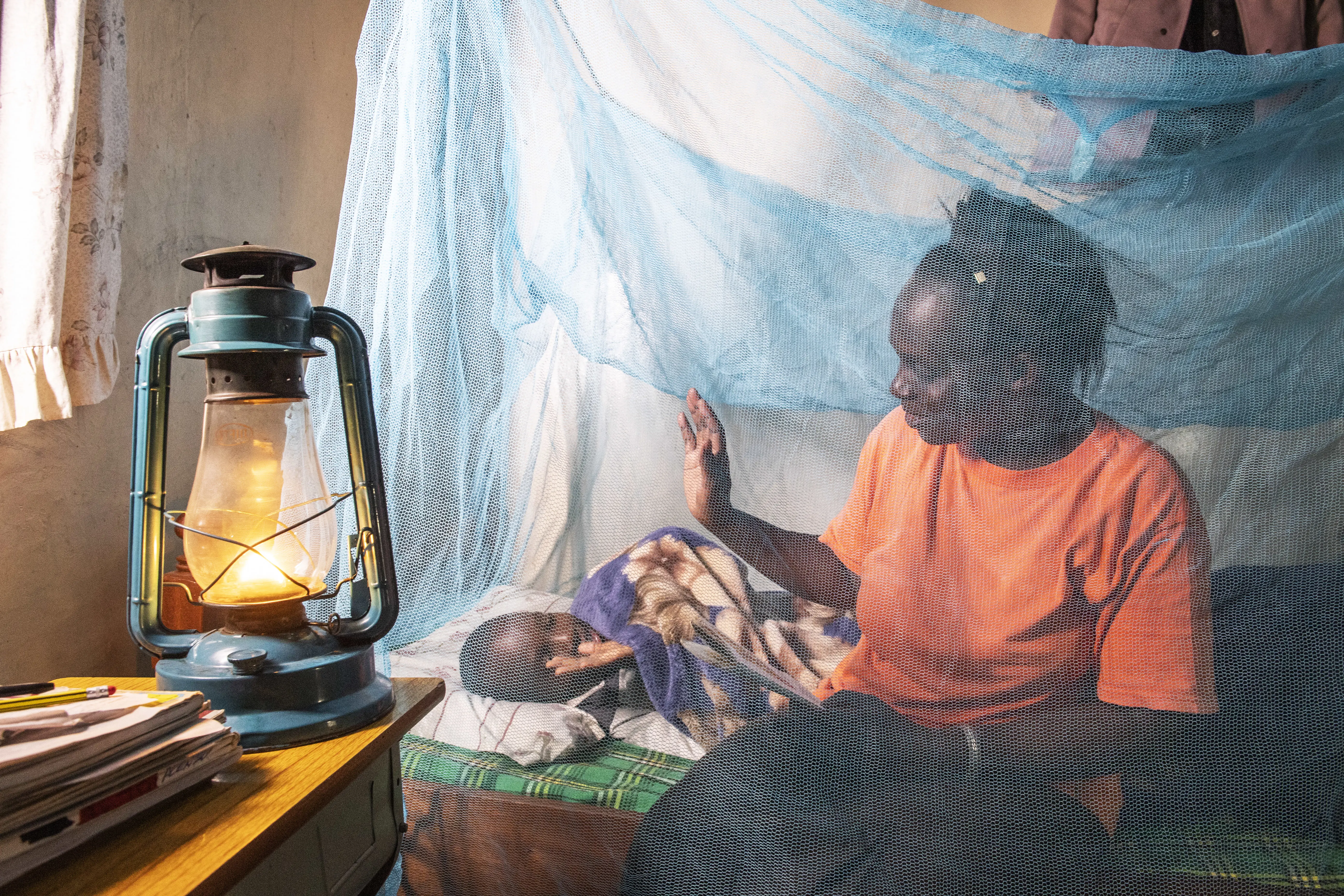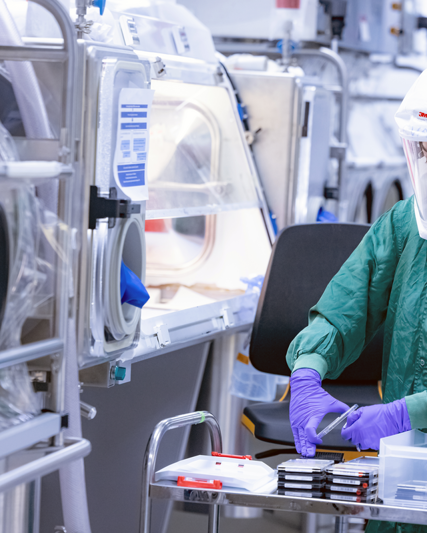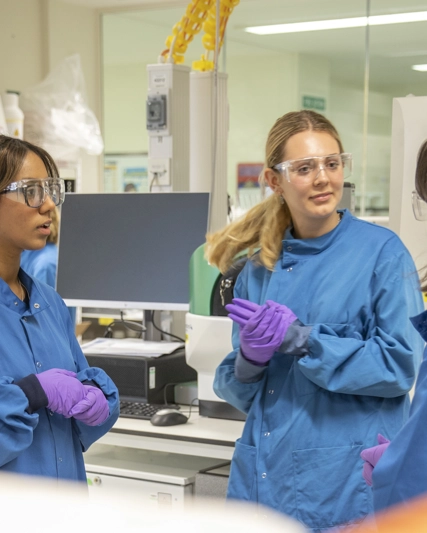Major advances in the tools available to get ahead of malaria, one of the world’s oldest diseases, have been made in recent years. But the threat is constantly evolving, and scientists say they can’t let up.
Caused by single-cell parasites, malaria is spread to humans through the bites of infected Anopheles mosquitos. Once they enter a person’s bloodstream through the mosquito’s saliva, the parasites travel to the liver, where they mature and reproduce. Symptoms typically include fever, tiredness, vomiting and headaches. In severe cases, malaria can cause jaundice, seizures, coma, or death. There are different types of malaria parasite. Two of the most prevalent are P. falciparum and P. vivax.
The overwhelming majority of lives lost to the disease include children under five. Unicef estimates that an infant dies almost every minute from malaria in sub-Saharan Africa.
There were an estimated 619,000 malaria deaths globally in 2021 compared to 625,000 in 2020. According to the WHO 2022 Malaria Report, the global tally of malaria cases reached 247 million in 2021 compared to 245 million in 2020 and 232 million in 2019.
Nigeria accounts for almost one third of all malaria deaths worldwide. Abass Sanni, who is on the Global Health Scientific Affairs team at GSK, suffered from repeated bouts of malaria as a child growing up in a rural part of the West African country.
He recalls long queues to see the doctor, severe itching caused by the medicine, painful injections and crying children.
“Malaria was so commonplace, you didn’t have to describe what it was like to anyone,” he says.
“But there’s a bigger impact. When a mother has to take care of a sick child, other children miss school. There’s a loss for the child, but also a loss for the siblings, and a loss of income for the mother and the father.”
As such, the disease continues to be a major driver of inequality both within countries and between them due to the massive economic impact it has on affected populations.
Scientists have faced huge challenges trying to keep up with the evolving threat of the disease. Malaria parasites are complex organisms that have the ability to evade the immune system by constantly changing their surface, preventing the body from mounting an effective response.
“This is a disease that has been with the human population for centuries,” says Dyann Wirth, a professor of immunology and infectious diseases at Harvard University who has studied malaria for more than three decades.
“The field has forever been just barely keeping up. We need to be thinking two or three chess moves down the table.”
At the same time, climate change is increasing the risks as warmer temperatures expand the geographical range of malaria-carrying mosquitoes. Malaria, and other diseases spread by mosquitoes like dengue, are gradually emerging in previously unaffected regions and re-emerging where they had subsided for decades, putting billions of additional people at risk, according to research in The Lancet Planetary Health.
New hope
The good news is vaccines, next-generation medicines and other tools needed to counter those problems are moving ahead.
Over the past two decades, an estimated 10.6 million lives have been saved by the wider use of tools such as long-lasting insecticide-treated bed nets, malaria chemoprevention, which uses medicine to prevent malaria during peak transmission times, and artemisinin-based combination therapies (ACTs), the standard treatment for P. falciparum malaria.
The first ever vaccine for a disease caused by a parasite in humans, known as RTS,S which helps protect children against P. falciparum malaria, and a single-dose radical cure for P. vivax malaria, have been developed by GSK and its partners for use in malaria endemic countries.
“This is the first time in history where new tools are available that could provide a radical change in our fight against malaria,” says Laura Sanz Alonso, GSK’s malaria portfolio leader.
RTS,S took 35 years to develop, and marks an important milestone in the bid to take on P. falciparum, the deadliest of five malaria parasites which affect humans and the most prevalent in Africa. The vaccine has already been administered to nearly 1.5 million children in Malawi, Kenya and Ghana. And Gavi, the Vaccine Alliance, has now announced which countries will be next to roll out the vaccine, meaning more children at risk of malaria will soon benefit from the protection it provides.
Amadou Barry, a doctor and GSK scientific affairs manager who lost two of his own siblings to malaria, says the testimonies of parents he’s heard while coordinating clinical trials of malaria vaccines in Mali underscores why a vaccine is so important.
“They told us that almost every day if you weren’t burying your own child, you were helping a neighbour bury their child,” he says.
Scientists today are eagerly awaiting more data on a potential second vaccine, known as R21, that could soon follow RTS,S in reaching those at risk of malaria.
GSK’s history in malaria treatment spans more than 200 years. Quinine, derived from the bark of the cinchona tree and the only known malaria treatment for centuries, was available in the 1790s at the Plough Court pharmacy, which grew into Allen & Hanburys, a GSK legacy company.
Decades later, entrepreneur Henry Wellcome, who would go on to found Burroughs Wellcome, travelled to Ecuador to study the tree and its properties.
Another critical point came during World War II, when there was a shortage of quinine to treat patients with malaria in the South Pacific. Burroughs Wellcome scientists discovered a drug that they had engineered and tested, initially for leukemia, could be a key to solving the problem. That treatment – the ‘first modern malaria medicine’ – was added to the WHO’s list of essential medicines in 1953.
The first single-dose cure to prevent the relapse of a form of malaria known as P. vivax – developed by GSK and the Medicines for Malaria Venture – could also have a significant impact in countries where malaria is endemic.
In vivax infections, parasites can lie dormant in the liver, leading to relapses and causing illness weeks or months after the initial infection. Before now, clearing the parasites from the liver has required taking medicine for up to 14 days, and difficulties with adherence to this course of treatment has been a barrier to malaria control in many countries.
Staying ahead
But the fight is far from over.
“The development of parasitic resistance to all antimalarials in clinical use is a major concern”, says Laura Sanz Alonso, GSK’s malaria portfolio lead.
“If malaria researchers aren’t able to rapidly develop and deploy novel antimalarials to combat resistant strains, the progress over recent decades could be lost, and the number of cases and deaths could increase once again after declining from their peak.”
As such, GSK is also pursuing new malaria medicines, aiming to identify potential drugs with low propensity for resistance that can still act as quickly as artemisinins. If found to be effective, they could be an addition to vaccines and given as a single shot, just before periods of high risk, and potentially provide protection for the whole season.
Furthermore, research published in Science in August 2023 showed that a naturally occurring bacterium discovered by GSK scientists – Delftia tsuruhatensis Tres Cantos 1 (TC1) – could be the basis for new anti-malarial interventions. Studies indicated that the bacterium can significantly reduce the malaria parasite load in both the mosquito midgut and salivary glands, indicating the potential of TC1 to inhibit transmission of the parasite to humans via the mosquito.
More broadly, long-lasting bed nets with new insecticide combinations, diagnostic tests and new antimalarial medicines are among the priorities. And more vaccines will be needed. Future vaccines, developed by companies and non-profits such as PATH who partnered with GSK to develop RTS,S, could target different stages of the Plasmodium parasite’s lifecycle, potentially delivering higher efficacy and improved durability.
Advances in research are fuelling optimism that the hardest hit nations will be able to reduce the burden of the disease dramatically. But the world is still in danger of falling short of malaria targets, and scientists will need to continue to innovate to get ahead of the disease.
“We’re not dealing with a static enemy,” says Harvard’s Wirth.
“It’s important to recognize that we have to stay on top of this.”



